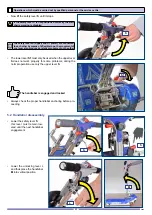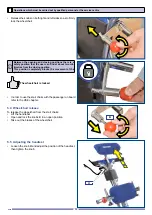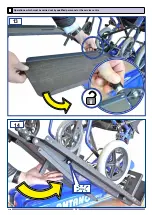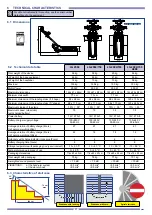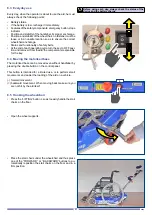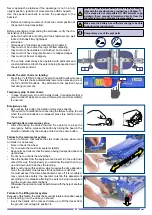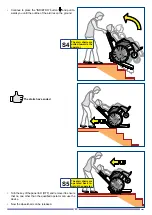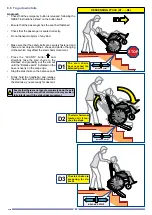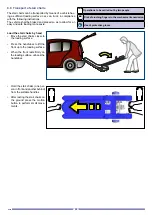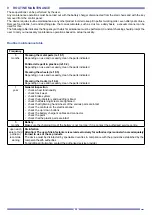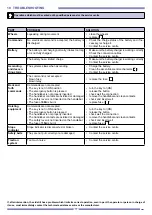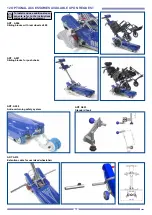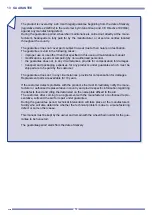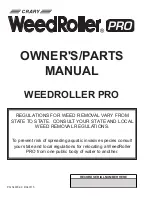
63
EN
Never approach a staircase if the passenger is not in a fully
upright position, (position of movement see USE chapter).
Use the special seat belts to secure the passenger to the
backrest.
• Before and during movement, check the correct position of
the person being transported.
Before ascending or descending the staircase, verify the cha-
racteristics of the stairs:
- perfect wheelchair anchoring and their fasteners are well
locked (K knobs firmly tightened)
- stair slope
- dimensions of the steps as described in Chapter 6.
- they must not be covered by rugs or fitted carpeting
- they must not be unstable or unfinished, but compact
- they must not have irregular, broken or collapsed edges
- they must not be wet or slippery.
• The vehicle must always be operated with particular and
constant attention to both the person being transported and
the using environment.
Handle the stair chairs on landing
• Press the L “LIFTING” button. The stair chairs lift to allow manoeu-
vring. The stair chairs automatically lower when pressing one of
the UP or DOWN buttons. Pay attention to the position of your
feet during movement.
Temporary stop of stair chairs
• In case of temporary stop of the stair chairs, it is advisable that a
great number of steps are covered, this way the maximum stability
is ensured.
Emergency stop
• By pressing this button the traction motor stops directly.
In the event of a malfunction concerning the failure to stop the aid
when the motion buttons are released, press this button to stop
the vehicle.
Restarting after an emergency stop
• After eliminating the cause that led the operator to press the
emergency button, release the button by turning the head in the
direction indicated by the arrows printed on the same button.
Failure to the main motor system
In case of a failure that makes the stair chairs inactive when used
on stairs it is necessary:
• Never unhook the wheel
• Try to ensure the maximum system stability
• Keep calm and ensure that the person being transported does not
get anxious.
• Do not try to unhook the wheelchair
• Take the handle from the equipment and insert it in the point indi-
cated; this way, though slowly, you will allow the stair chair to go
up and down until it reaches the landing.
Before carrying out this solution, which requires the drive abandon-
ment, the operator must assess if this operation is risk-free.
He must assess if the drive abandonment, even if it is monitored,
may compromise safety; the operator must do this assessment
according to the disease affecting the person being transported
and the environmental conditions.
Otherwise the operation must be performed with the help of another
person.
Failure to the lifting motor system
Because of this failure, the stair chairs cannot rotate and position easily
on the landing; in such a case you should:
• Insert the handle at the rear and rotate up to lift the tracks from
the ground, just enough to position it.
K
K
L
Make sure that the dimensions of the steps are compa-
tible with the specifications provided (see Chapter 7)
If the steps are not compatible DO NOT attempt to go
up/down them; request information directly from the
manufacturer or an authorised representative.
Make sure the battery has sufficient charge to be able
to perform the job required.
Compulsory use of the seat belts
Summary of Contents for LG2004
Page 2: ......

